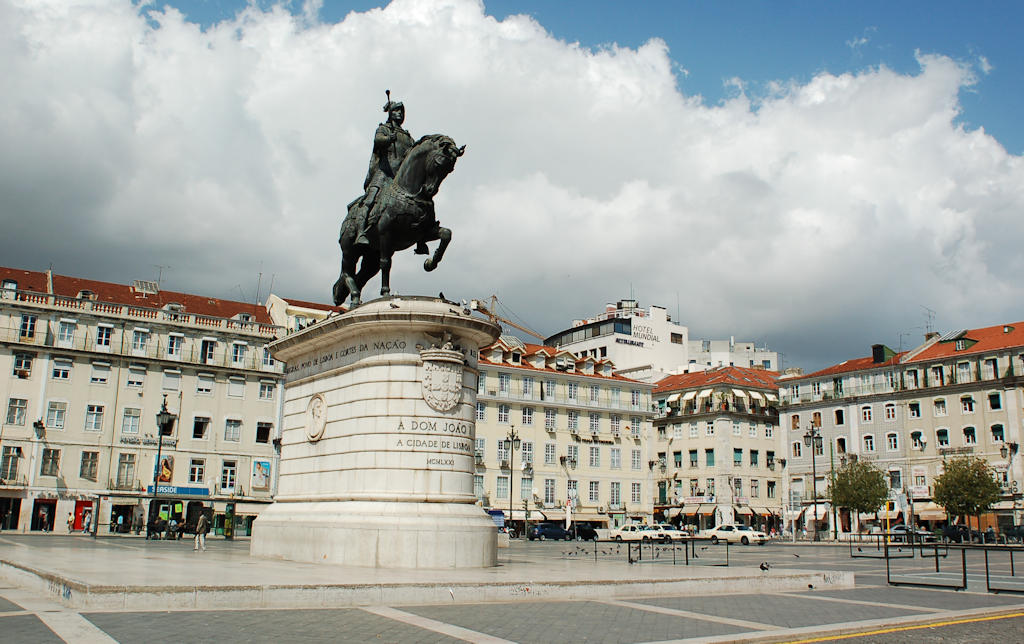In 1885, a covered market was built in Figueira Square, which served as a bustling hub for commerce. However, this market was later demolished in the 1950s, and today, the four-story buildings surrounding the square are occupied by hotels, shops, and cafes, transforming the area into a vibrant urban space.
One of the notable features of Praça da Figueira is the bronze equestrian statue of John (João) I, erected in 1971 and created by the renowned sculptor Leopoldo de Almeida. This majestic statue pays tribute to D. João I, the King of Portugal during the 15th century, and adds a touch of historical significance to the square.
Figueira Square is conveniently served by the Rossio station on the Green Line of the Lisbon Metro, as well as several bus routes operated by Carris and the CP Urbanos de Lisboa train service on the Sintra Line, which stops at Rossio Railway Station (Estação Ferroviária do Rossio).
The history of Praça da Figueira dates back to the late 18th century when Lisbon faced the challenge of lacking a central market. The Marquês de Pombal saw the solution and, on November 23, 1775, the land of Figueira Square was donated to the city of Lisbon by royal decree issued by King Joseph (José) I of Portugal. The land, measuring 380 palmos from north to south and 440 palmos from east to west, was granted with the condition that it would be the designated location for the sales of fruits, vegetables, and poultry. The construction of the market cost 10,251 réis, funded by the public treasury.
Thus, an open-air market emerged in the square, which was then known as Praça da Erva. Over time, small stalls and a well were built on the site where a fig tree once stood. As the years went by, the square underwent various improvements. In 1834, trees were planted, and lighting was installed. In 1849, the square was enclosed with iron gates, creating a more organized and secure market environment. However, in 1883, the iron structure was demolished, making way for the construction of the new market, which was inaugurated with great pomp and circumstance, in the presence of the royal family, two years later.
Lisbon.vip Recommends
After two years of controversy, the market's metal structures were auctioned off for 830 contos to a scrap dealer from Porto in June 1949. The removal of the market forever changed the landscape of Figueira Square, leaving space for its evolution into a more modern and dynamic urban square.
Today, Praça da Figueira stands as a testament to Lisbon's rich history and continuous urban development. Its central location, surrounded by vibrant shops, hotels, and cafes, makes it a popular meeting point for both locals and tourists. The square's historical significance, coupled with its contemporary charm, creates a captivating atmosphere that invites visitors to explore and immerse themselves in the dynamic spirit of Lisbon's Baixa district.
As you wander through Figueira Square, take a moment to appreciate its architectural features, soak in the bustling energy of the surrounding area, and reflect on the centuries of history that have shaped this remarkable urban space. Praça da Figueira is a living testament to the resilience and transformation of Lisbon throughout the ages, a place where the past meets the present, and where the heartbeat of the city can be felt.
Map View



